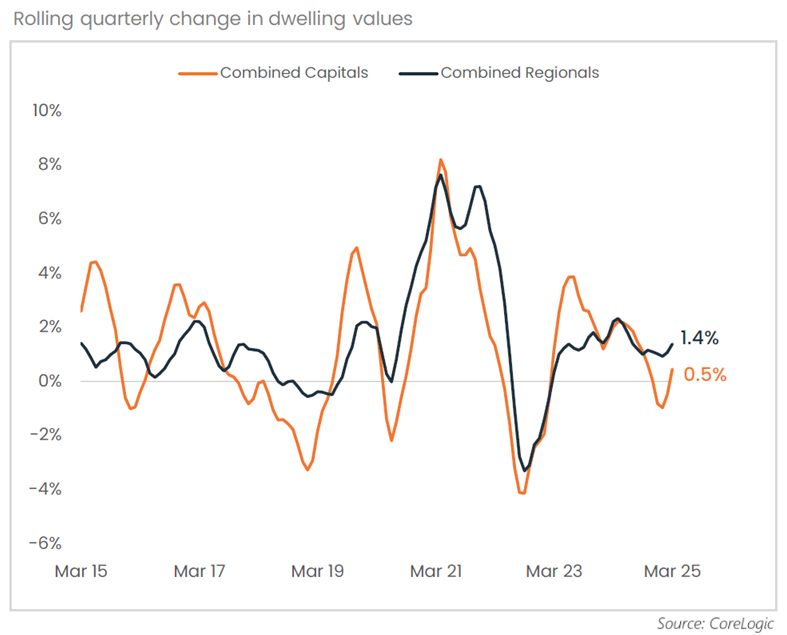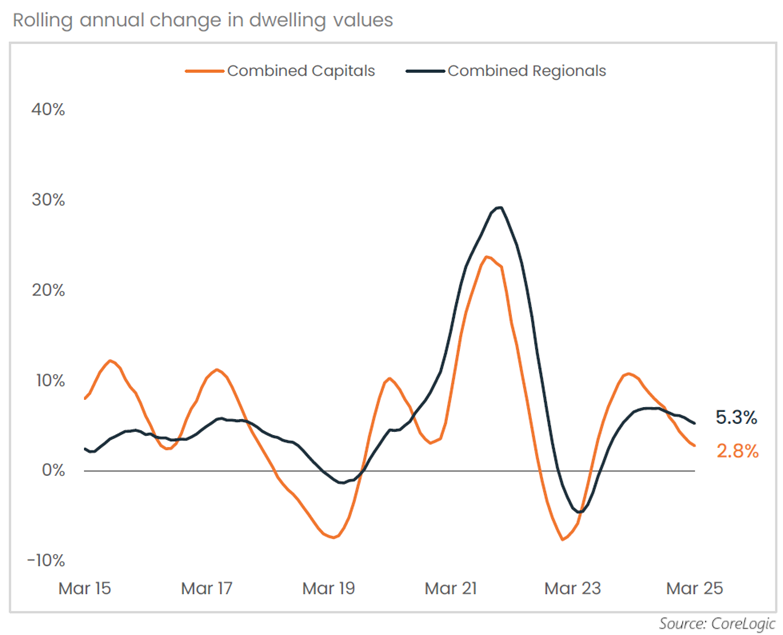Recent growth adds $230,000 to median dwelling value

Australia’s housing market has recorded a 39.1% increase in national home values over the past five years, translating to a gain of roughly $230,000 in the median dwelling price, according to a new CoreLogic report.
Although this level of growth is notable, historical comparisons show it falls short of the surges seen in previous decades — particularly in the late 1980s and early 2000s.
Kaytlin Ezzy (pictured above), economist at CoreLogic, said the recent growth reflects strong housing demand, limited supply, and economic stability.
“Outside of a few short months of declines, values have seen strong upward pressure over the past five years, driven by low stock levels and increased demand,” Ezzy said.
“But this growth cycle remains moderate compared to earlier periods, when financial deregulation, strong economic growth and favourable demographic shifts helped fuel remarkable value growth.”

In its latest Housing Chart Pack, CoreLogic noted national values jumped 75.5% in the five years to March 1989, and 79.7% in the five years to December 2003 — both outpacing the latest figure.
Ezzy said rising population numbers, financial market deregulation, and falling interest rates after the early 1980s recession helped drive housing demand in the late ‘80s.
“Additionally, the introduction of capital gains taxes in 1985, with an exemption for primary residences, drove an increase in owner-occupier demand,” she said.
The early 2000s experienced a similar uplift, supported by low interest rates, a strong post-crisis economy, and a booming resources sector.
“Changes to capital gains taxes benefiting investors, and the introduction of first-home buyer grants, also helped stimulate housing demand in the 2000s,” she said.

Though the latest five-year increase is smaller in percentage terms, its monetary value is more substantial than previous peak periods. Adjusted for today’s values, the gain of about $230,000 outpaces the roughly $140,000 seen by the end of 2003, and the $60,000 lift noted in 1989.
While the pattern of five-year growth was broadly similar across major cities, the peak years varied.
In Sydney, the biggest five-year increase occurred in the late 1980s, with values rising 80.7%. This slightly exceeded the 78.3% growth seen by November 2003. Melbourne followed a similar trend, with values nearly doubling in the 1980s (98.8%), outperforming the 79.5% rise during the 2000s.
Elsewhere, cities such as Brisbane, Adelaide, Perth, Hobart, and Canberra saw their strongest five-year growth during the mid-2000s. Perth stood out with a 137.8% gain to September 2006 — the largest among all capitals. That figure was nearly double the 75.2% increase recorded over the past five years.
“Strong economic conditions and positive interstate migration amid the 2000’s mining boom, saw housing values in the western capital skyrocket before falling though much of the 2010’s,” Ezzy said.
“Brisbane also benefited from a demand driven surge in the early 2000’s, with strong interstate migration driving population growth, while the relatively affordable price points and broader positive economic environment helped housing values in Hobart and Adelaide boom.”
Want to be regularly updated with mortgage news and features? Get exclusive interviews, breaking news, and industry events in your inbox – subscribe to our FREE daily newsletter. You can also follow us on Facebook, X (formerly Twitter), and LinkedIn.



